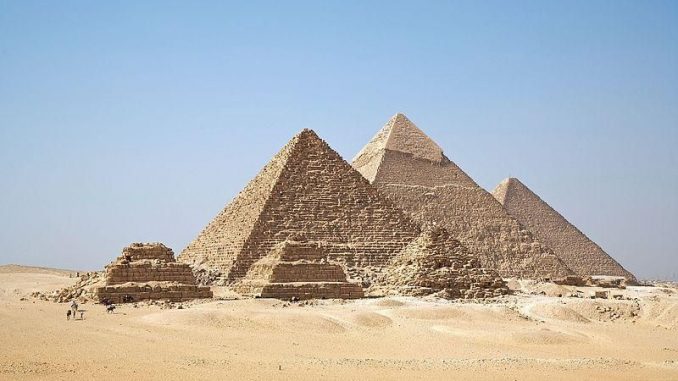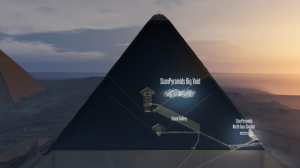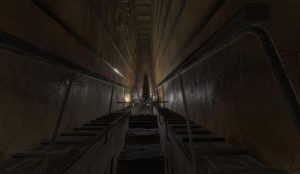
A 100 foot long hidden chamber has been found by scientist inside the Great Giza Pyramid, which is the large among the three Egyptian Pyramid after any discovery since the 19th century. The chamber was discovered by scientists using the cosmic ray particles from space which allows them to build up 3D picture of the internal structure of the Great Pyramid without going inside it.
Earth is bombarded by particles from space every day. These particles—muons—can pass through dense objects like stone, but when they move into a space that is less dense, their trajectory changes slightly. By tracking muons, scientists can trace these changes to build up a 3D picture of the internal structure of a given building—in this case, the Great Pyramid at Giza.
3D view of the Internal Structure of Giza Pyramid

The Egyptian Pyramid which was built between 2580 and 2560 BC was commissioned by King Khufu, one of the most powerful Pharaohs from the fourth dynasty, contains three main chambers—the Queen’s Chamber, the King’s Chamber and a subterranean chamber. It also has a Grand Gallery—a 153-foot-long corridor with a steep incline that connects it the other rooms.
The Grand Gallery of Giza Pyramid

Scientists do not know what is inside the void—just that it is there, it could means a new room full of treasure, or it could be something that was included in the design of the building for architectural purposes. Kate Spence, Senior Lecturer in Egyptian Archaeology at the University of Cambridge, U.K., believes the latter is the more likely explanation.
The ScanPyramids team said more research needs to be done to understand the internal structure of the monument. They said that while their findings confirm the existence of a hidden void, there are many more things to consider—the space could be made from one or several adjacent structures, and it could be inclined or horizontal. The team is calling for more interdisciplinary collaborations to better understand what they have found—and how this potentially relates the construction process of the pyramid.
In a press conference about the discovery, the team said that physical exploration was a possibility, but that would be up to the relevant authorities to decide. Accessing the chamber would require significant drilling at the site, causing damage to the pyramid. The team said technologies currently being developed could make exploration as non-invasive as possible. They say one option could be drilling a very small hole and using a tiny flying robot to explore the chamber.
